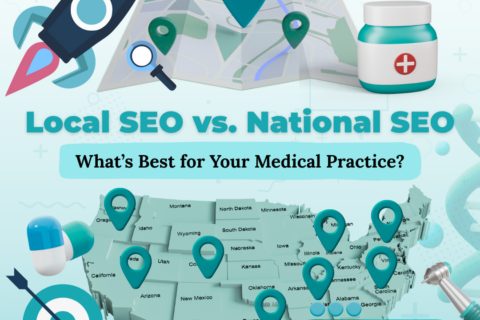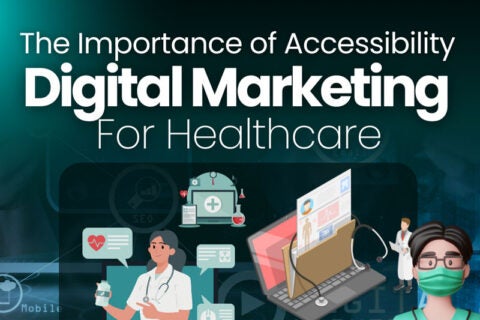Case Study: Cracking the Code on Patient Acquisition in 2024

Introduction
In 2024, the healthcare industry has undergone rapid transformation, marked by heightened competition and evolving patient expectations. New healthcare facilities are springing up everywhere, intensifying the battle to attract and retain patients. As a result, healthcare providers are finding it increasingly difficult to stand out and grow their patient base. This case study explores the current landscape of patient acquisition, identifies common challenges, and provides actionable strategies to help healthcare organizations succeed in this competitive environment.
What Is Patient Acquisition?
Patient acquisition is the process of attracting and onboarding new patients into a healthcare practice. It involves both traditional and digital marketing strategies aimed at encouraging potential patients to choose one facility over its competitors. In today’s digital age, patient acquisition has evolved from handing out flyers and relying on word-of-mouth to leveraging online platforms and social media to reach a broader audience.
Effective patient acquisition is essential for expanding a healthcare practice’s patient base and ensuring long-term growth and success. Practices that fail to adapt to these new strategies risk losing potential patients to more digitally savvy competitors.
The Importance of Patient Acquisition
For healthcare practices, patient acquisition is more than just a strategy—it’s a necessity. Successfully attracting new patients is crucial for expanding services, increasing revenue, and maintaining relevance in a highly competitive industry. With more choices available to patients than ever before, healthcare organizations must continually innovate to stay ahead and ensure a steady flow of new patients.
Moreover, patient acquisition isn’t just about growth; it’s also about sustainability. While patient retention keeps a practice stable, patient acquisition drives its expansion. Together, these strategies form the backbone of a thriving healthcare practice.
Patient Acquisition vs. Patient Retention
Understanding the difference between patient acquisition and retention is key to developing a balanced strategy. Patient acquisition focuses on attracting new patients, while patient retention is about keeping current patients engaged and satisfied. Both are essential: acquisition fuels growth, and retention ensures stability.
A successful healthcare practice needs to strike a balance between these two strategies. Neglecting either one can lead to missed opportunities and potential decline.
The Challenges of Patient Acquisition in 2024
Healthcare providers face numerous challenges when it comes to patient acquisition in 2024. Here are some of the most pressing issues:
- Heightened Competition:
- With the proliferation of new healthcare providers, patients have more choices than ever. This increased competition makes it challenging for individual practices to stand out and attract new patients.
- Evolving Patient Expectations:
- Modern patients expect more from their healthcare providers. They demand convenience, personalized care, and quick access to services. Practices that fail to meet these expectations may struggle to attract new patients.
- Complex Processes:
- The healthcare industry is often characterized by complicated processes, from appointment scheduling to billing and insurance. These complexities can be a barrier to patient acquisition if not managed effectively.
- Outdated Acquisition Technologies:
- Relying solely on traditional marketing methods, such as paper advertisements and word-of-mouth, can hinder a practice’s ability to reach a wider audience. In contrast, a robust digital presence is essential for attracting tech-savvy patients.
- Accessibility Issues and Limited Community Connection:
- Practices that are difficult to reach or lack strong ties to their local community may find it harder to attract new patients. Accessibility and community engagement are key factors in patient acquisition.
Setting Patient Acquisition Objectives
To overcome these challenges, healthcare organizations must set clear, measurable objectives for their patient acquisition efforts. Here are some potential goals:
- Increase Patient Acquisition Numbers:
- Set a target for growth, such as a 25% increase in new patients over the next year. This provides a clear direction for marketing efforts and helps measure success.
- Improve Digital Presence:
- Enhancing online visibility should be a top priority. This includes optimizing the practice’s website for search engines, being active on social media, and ensuring the practice is easy to find online.
- Enhance Community and Patient Engagement:
- Strengthening relationships with both existing patients and the local community is crucial. This can involve hosting events, improving patient communication, and creating online platforms for patient interaction.
Proven Patient Acquisition Strategies for 2024
With objectives in place, here are some effective strategies to achieve them:
- Focus on SEO and Digital Marketing:
- Search Engine Optimization (SEO) is critical for making sure your practice appears at the top of search results when potential patients are looking for healthcare services online. Pair this with marketing in the digital era efforts like Pay-Per-Click (PPC) advertising to drive targeted traffic to your website.
- Maximize Your Online Presence:
- Being present where your patients are—whether on social media, Google listings, or local directories—makes it easier for them to find and choose your practice.
- Produce Quality, Relevant Content:
- Regularly publish educational content, such as blogs, videos, and infographics, that addresses common health concerns. This not only engages potential patients but also establishes your practice as a trusted authority in healthcare.
- Manage Patient Feedback and Reviews:
- Actively monitor and respond to online reviews to maintain a positive reputation. Highlighting positive reviews and addressing negative feedback constructively can significantly influence potential patients’ decisions.
- Digitize Your Processes:
- Streamline patient interactions by offering online booking, digital intake forms, and secure messaging. These conveniences are increasingly expected by today’s patients and can set your practice apart from the competition.
- Build Bridges with Your Local Community:
- Engage with local businesses and participate in community events to increase visibility and build strong, lasting relationships within the community.
- Don’t Forget Offline Marketing Efforts:
- While digital marketing is crucial, traditional methods still have their place. Print advertisements, local health fairs, and direct mail campaigns can reach audiences who may not be as active online.
Conclusion: Successfully Acquire New Patients in 2024
The healthcare industry in 2024 is a competitive battlefield, but with the right strategies, your practice can thrive. By embracing digital marketing, optimizing patient experiences, and staying connected with your local community, you can effectively attract and retain new patients, ensuring long-term growth and success.
Key Takeaways
- Prioritize SEO and Digital Marketing to enhance your practice’s visibility and attract more patients.
- Maximize Online Presence across multiple platforms to ensure patients can easily find and engage with your practice.
- Produce High-Quality Content to build your reputation as a trusted healthcare provider.
- Manage Online Reviews to maintain a positive reputation and address patient concerns.
- Digitize Processes to offer the convenience that modern patients expect.
- Engage with the Local Community to build strong relationships and increase visibility.
- Balance Digital and Offline Marketing Efforts to reach a diverse audience.
By implementing these strategies, your healthcare organization can navigate the challenges of 2024 and emerge as a leader in patient acquisition.





